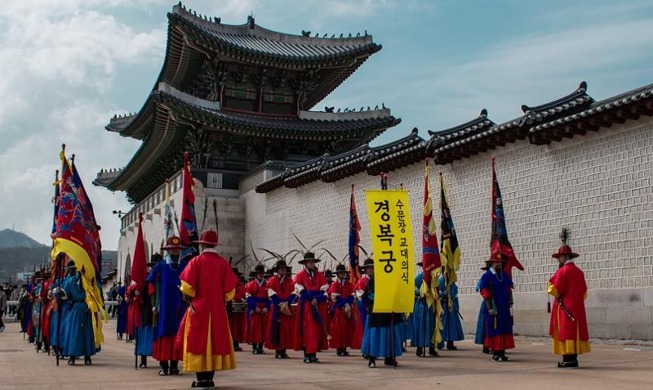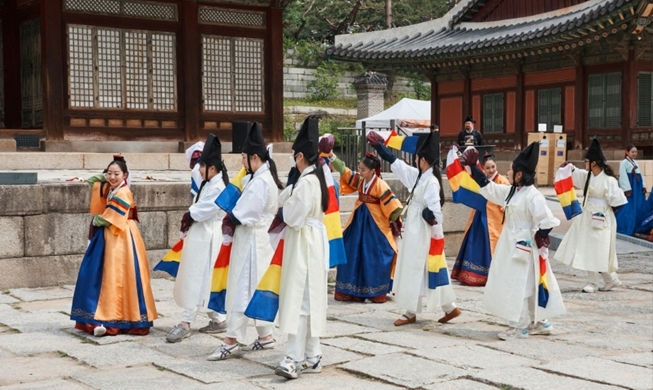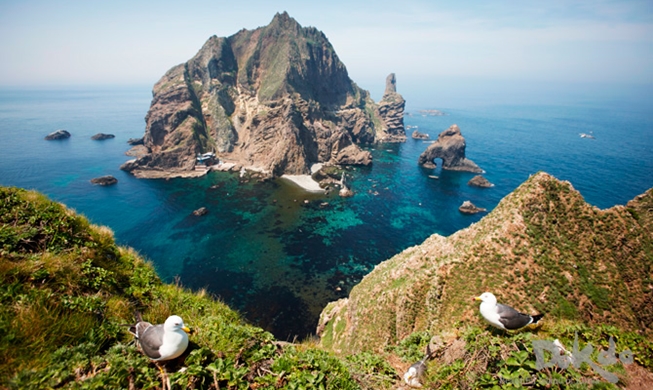-
 Korea.net's 24-hour YouTube channel
Korea.net's 24-hour YouTube channel- NEWS FOCUS
- ABOUT KOREA
- EVENTS
- RESOURCES
- GOVERNMENT
- ABOUT US
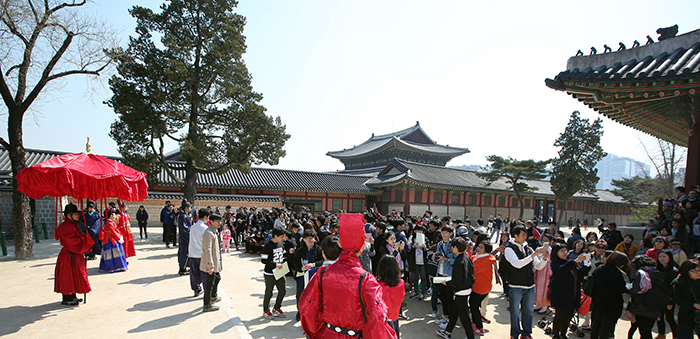
Visitors watch a reenactment of a ceremonial appointment of a royal gate keeper at Gyeongbokgung Palace in March 2016. More than 10 million people visited Seoul's four main royal palaces and Jongmyo Shrine this year.
The number of annual visitors to Seoul's four main royal palaces -- Gyeongbokgung, Changgyeonggung, Changdeokgung and Deoksugung palaces -- and to the Jongmyo Shrine exceeded 10 million this year for the first time ever.
The Cultural Heritage Administration (CHA) announced that the total number of visitors to the four royal palaces and to the royal shrine hit 10,012,881 as of Nov. 24. That number is much higher than last year’s 9,007,423. This is the first time that more than 10 million people visited the royal palaces and shrine, ever since their opening in the early 1960s, said the CHA.
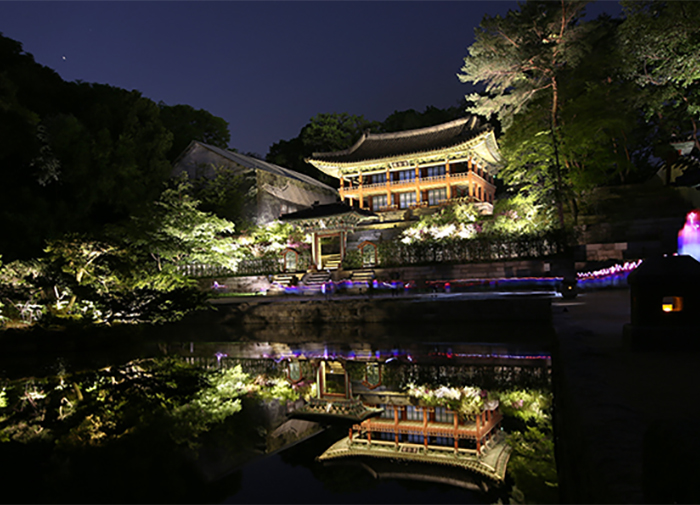
Opening the royal palaces during the evenings has helped increase annual visitor numbers, as people can now enjoy the palace grounds at night under the moonlight. The photo is from the Changdeokgung Palace Moonlight Tour.
According to the Cultural Heritage Administration, the extended opening hours at the royal palace, staying open during the evenings, and allowing free entrance to anyone wearing traditional Hanbok clothes both played a part in increasing visitor numbers. In 2016, people were able to enjoy the royal palaces in the evening through the Changdeokgung Palace Moonlight Tour and the Starlight Tour at Gyeongbokgung Palace. These programs ran for 120 days this year, but only for 48 days in 2015. Also starting this year, people in Hanbok were able to enjoy extended access to the palace, as they were now allowed in for free not only during the day time, but during the evenings, too.
Another reason that boosted the number of annual palace visitors is the varied content related to the royal palaces. These include a second Royal Palace Festival, which took place from April to June, the opening of the Jibokjae Hall (집옥재, 集玉齊), a former royal library at Gyeongbokgung Palace, and an exhibition about the lives and habits of the royal family and courtiers, which took place at the Yeongchunheon (영춘헌, 迎春軒) and Jibbokheon (집복헌, 集福軒) halls at Changgyeonggung Palace.
Other annual royal court experience programs also raised public interest in the royal palaces, and received favorable responses from both Korean and non-Korean visitors. These included the court cuisine sampling & cooking class at the Sojubang (소주방, 燒廚房), the royal palace kitchen at Gyeongbokgung Palace, where participants were able to taste court food that was traditionally only served to the king.
The CHA said that, “We will develop and run various programs so that in the future more people can take an interest in the royal palaces and the Jongmyo Shrine.”
By Yoon Sojung
Korea.net Staff Writer
Photos: Jeon Han Korea.net Photographer
arete@korea.kr




